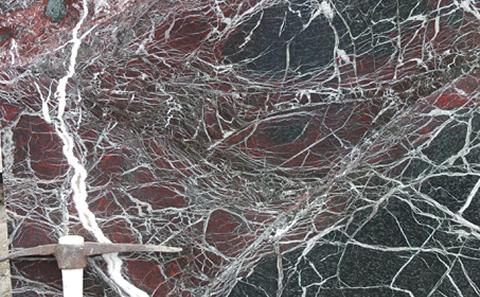ECORD Distinguished Lecture Event
For more information regarding this event, please email Damon.Teagle@southampton.ac.uk .
Event details
The University of Southampton is privileged to host one of the 2017 European Consortium for Ocean Drilling Distinguished Lectures with Professor Gretchen Früh–Green, from ETH Zurich.
“Serpentinization and life: Insights through ocean drilling”
Professor Gretchen Früh–Green, ETH Zurich:
4 pm – Friday 12th May, 2017; followed by a Reception
This event is co-sponsored by the Southampton Marine & Maritime Institute, the Institute for Life Sciences, the Clean Carbon USRG, and Ocean & Earth Science, National Oceanography Centre Southampton.
Professor Früh–Green is a leading marine scientist in the Department of Earth Science at ETH Zurich. Her research focuses on the exploration of the oceanic lithosphere exposed on the seafloor and on land. The aim of her research is to gain a broader understanding of hydrothermal systems on the seafloor and the conditions under which they form and evolve. A significant aspect of this work is participation in international marine research programs, for example, the International Ocean Discovery Program, IODP. Gretchen was part of the team that discovered the “Lost City” in the mid-Atlantic, a previously unknown type of hydrothermal ecosystem, hosted by hydrated and carbonated rocks from the Earth’s upper mantle. The Lost City is a collection of towers and spires of ghostly white calcium carbonate up to 60 meters high that significantly differs from Black Smokers, the underwater hot springs that form near submarine volcanoes.
Abstract:
Ultramafic and lower crustal rocks are exposed on the seafloor in many tectonic settings and have been the target of a number of expeditions throughout the history of ocean drilling. Progressive interaction of seawater with mantle-dominated lithosphere during serpentinization is a fundamental process that controls rheology and geophysical properties of the oceanic lithosphere and has major consequences for heat flux, geochemical cycles and microbial activity in a wide variety of environments. At slow spreading ridge environments, serpentinization occurs along detachment faults (major, large-scale offset normal faults), as mantle rocks are uplifted to the seafloor and are incorporated in dome-shaped massifs known as oceanic core complexes. The processes controlling fluid flow and a deep biosphere are intimately linked, however, the spatial scale of lithological variability, the implications for geochemical cycles and the consequences for subsurface ecosystems supported by these systems remain poorly constrained.
This presentation will provide an overview of mid-ocean ridge processes and will highlight recent results of drilling the Atlantis Massif on the western flank of the Mid- Atlantic Ridge at 30°N. The Atlantis Massif is one of the best-studied oceanic core complexes and hosts the unique Lost City hydrothermal field on its southern wall.
Serpentinization reactions in the underlying mantle rocks produce high pH fluids that form large carbonate-brucite structures upon venting on the seafloor. The fluids have negligible dissolved carbonate and metals, but have high concentrations of hydrogen, methane and formate that support novel microbial communities dominated by methane- cycling archaea in the hydrothermal carbonate deposits. Understanding the links between serpentinization processes and microbial activity in the shallow subsurface of the Atlantis Massif was the focus of IODP Expedition 357, which used seabed rock drilling technology for the first time in the history of the ocean drilling programs to recover ultramafic and mafic rock sequences along a detachment fault zone. The expedition also successfully applied new technologies that provide insight into active serpentinizing systems. A sensor package and water sampling system on the seabed drills monitored real-time variations in dissolved oxygen and methane, pH, oxidation-reduction potential, temperature and conductivity during drilling and allowed sampling of bottom water after drilling. A borehole plug system for sealing the boreholes was installed at two sites to allow access for future sampling; and chemical tracers for contamination testing were delivered into the drilling fluids with the seabed drills. Thus, results of drilling the Atlantis Massif will provide important insights for future studies of serpentinization processes and microbial activity at slow-spreading ridges.
